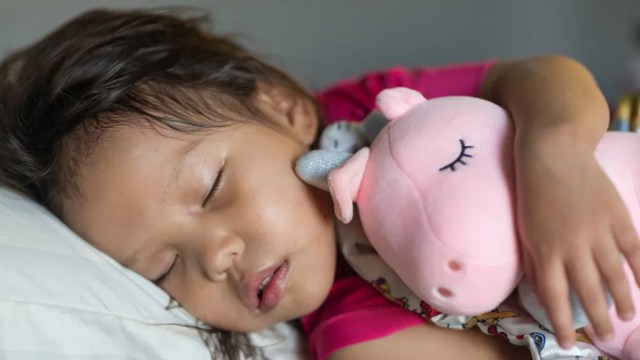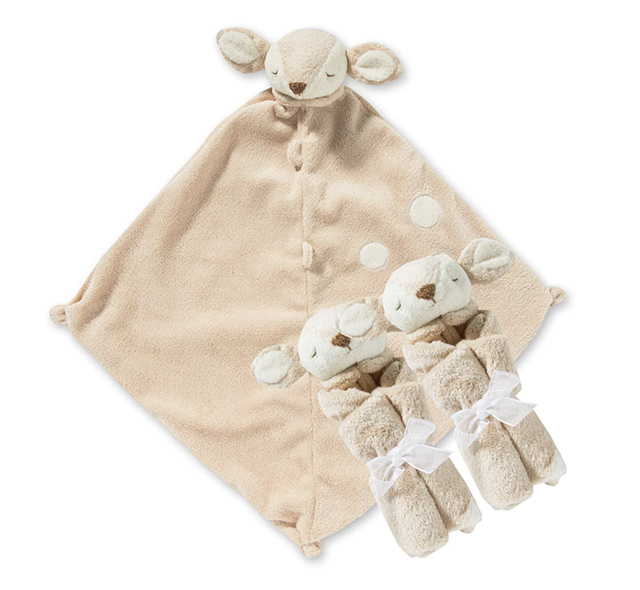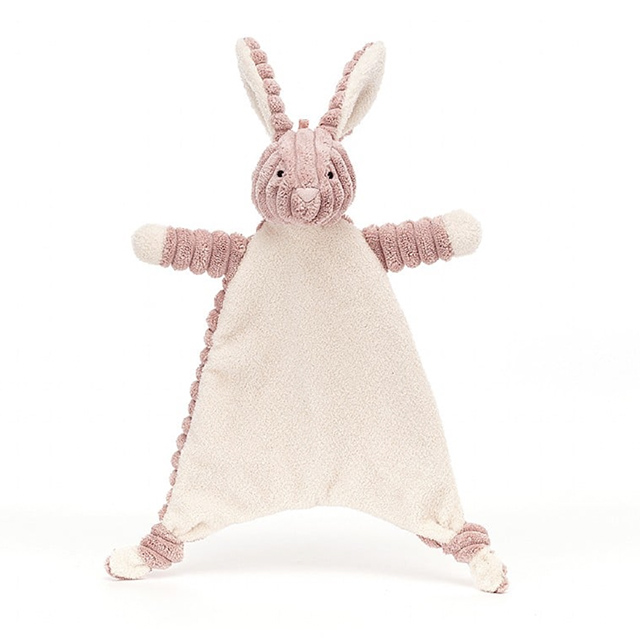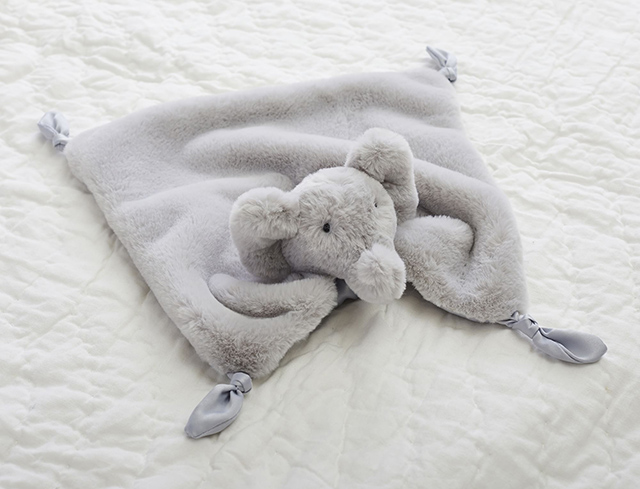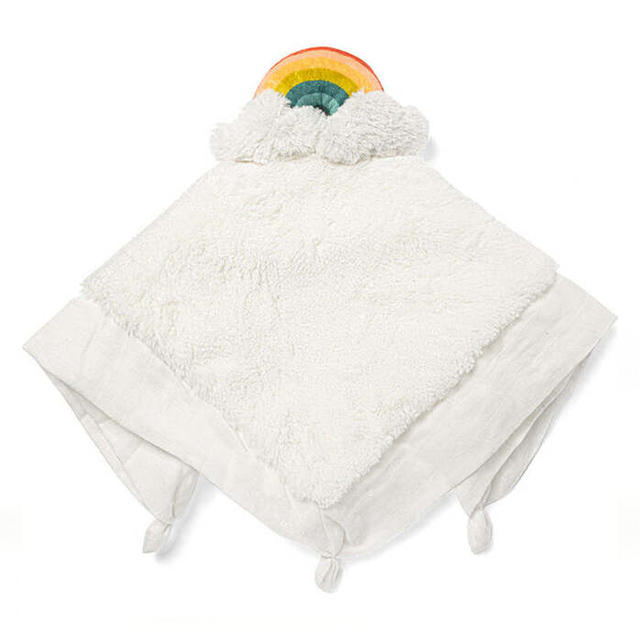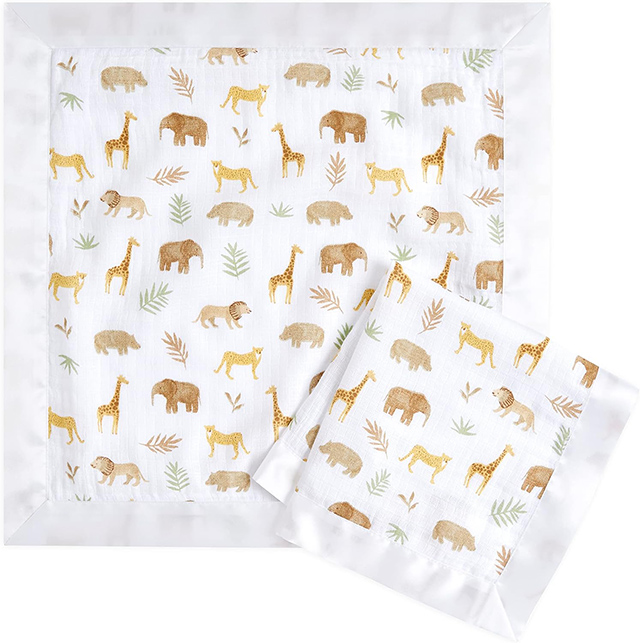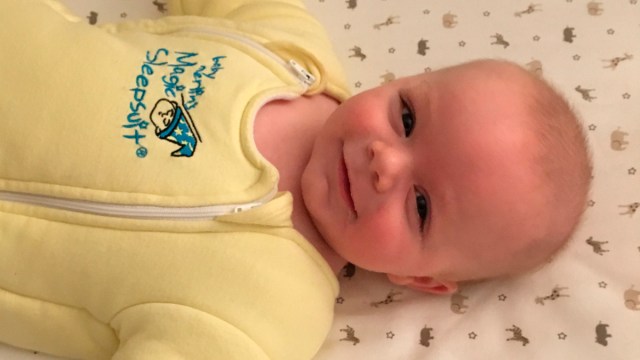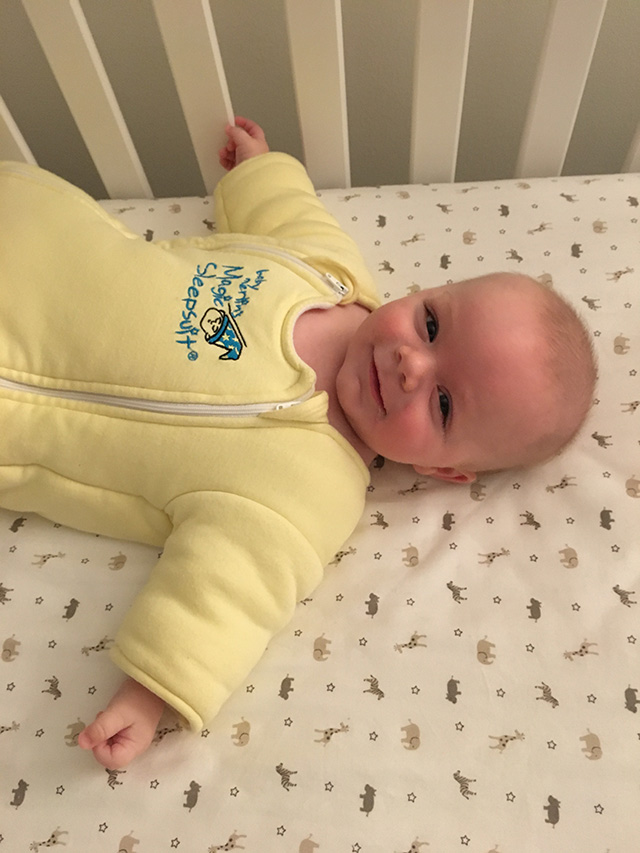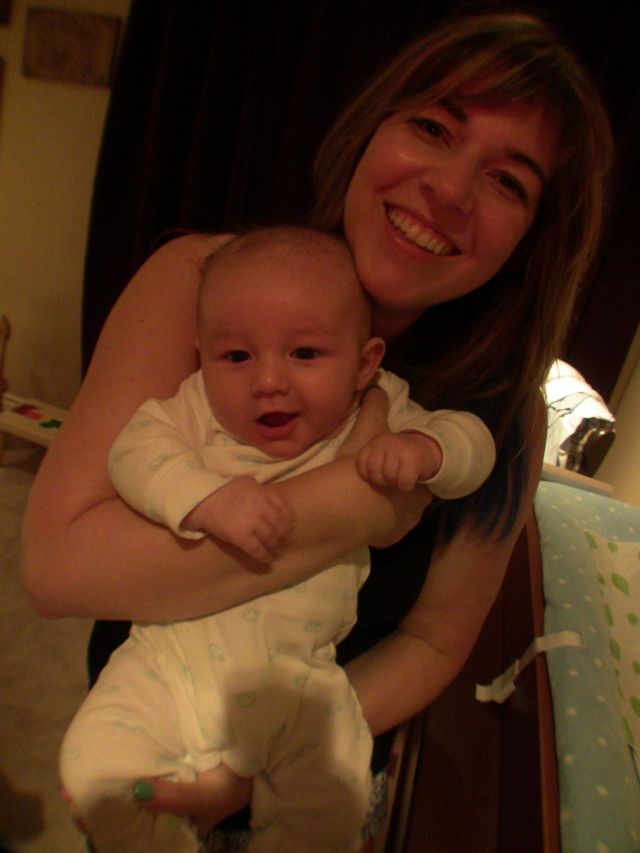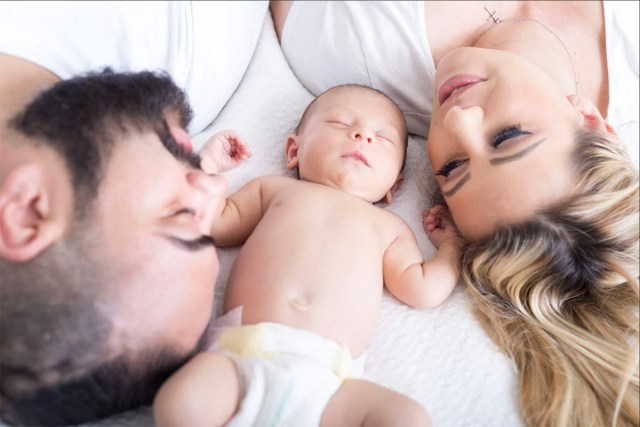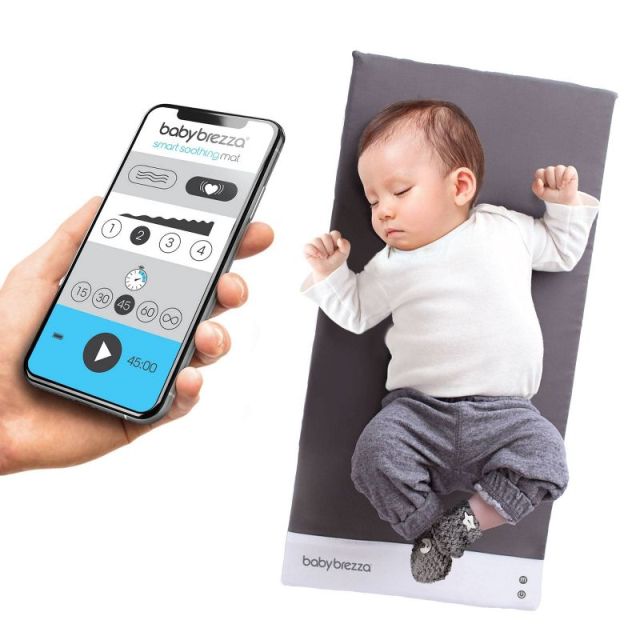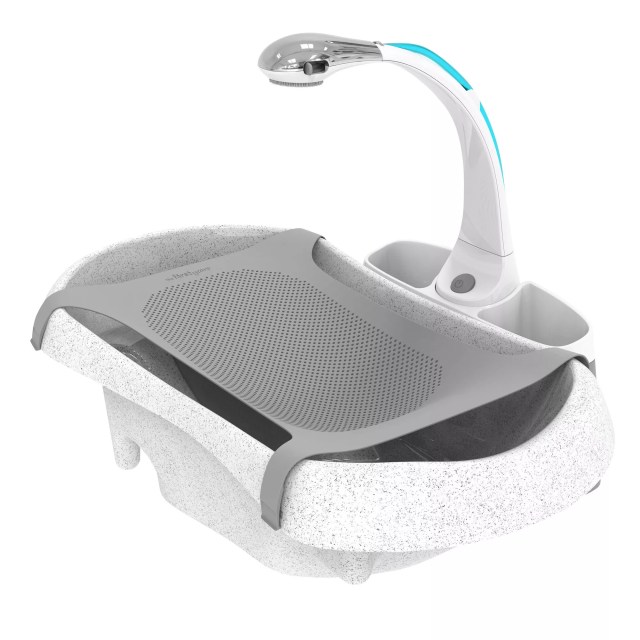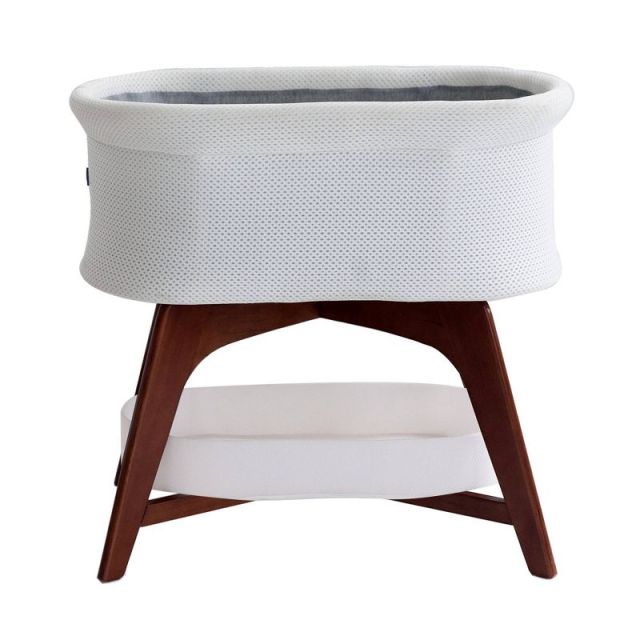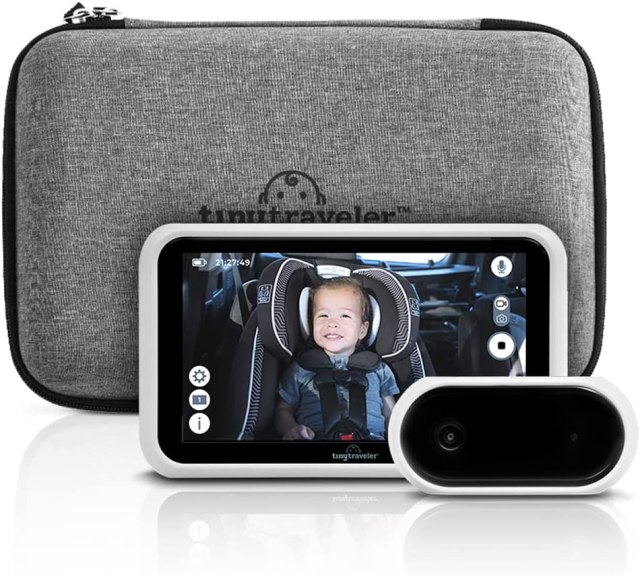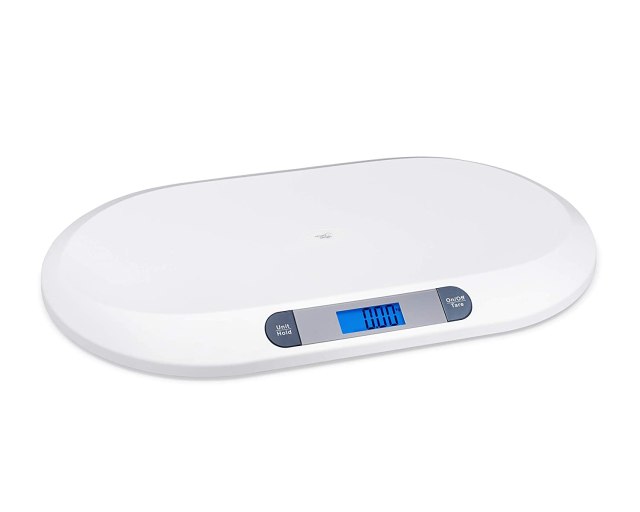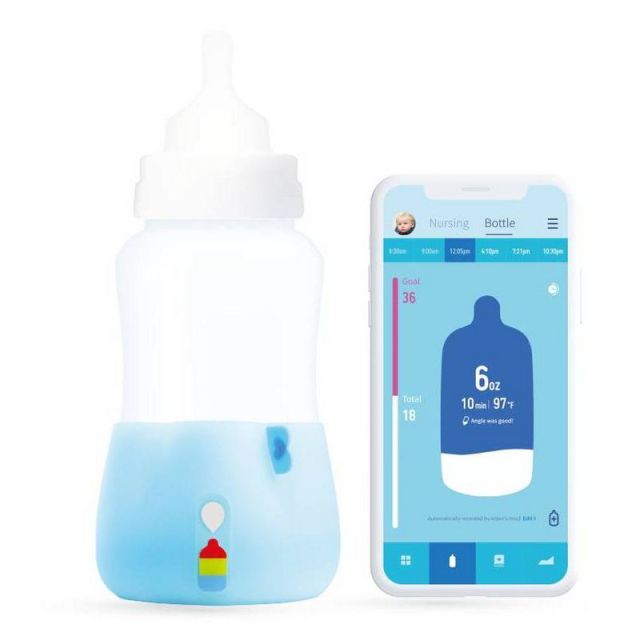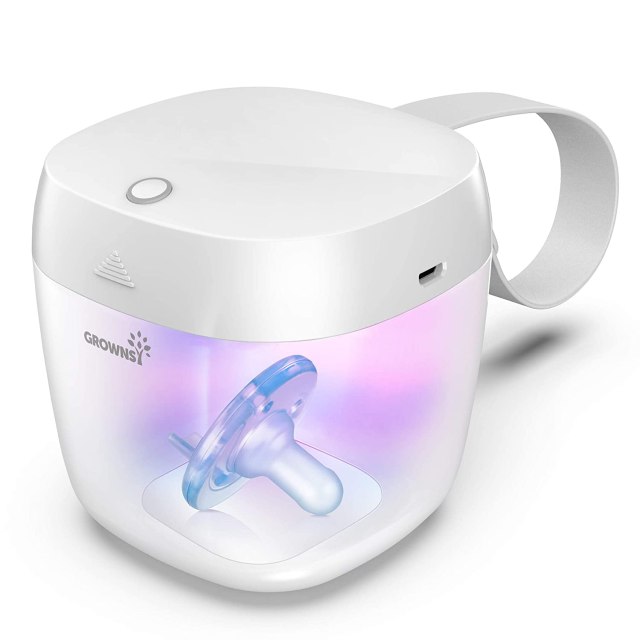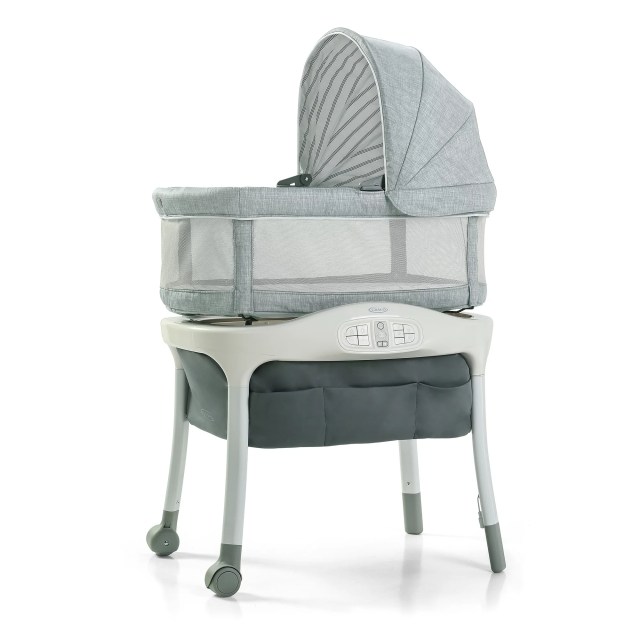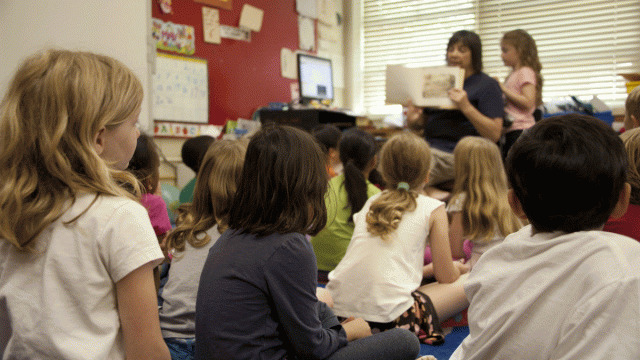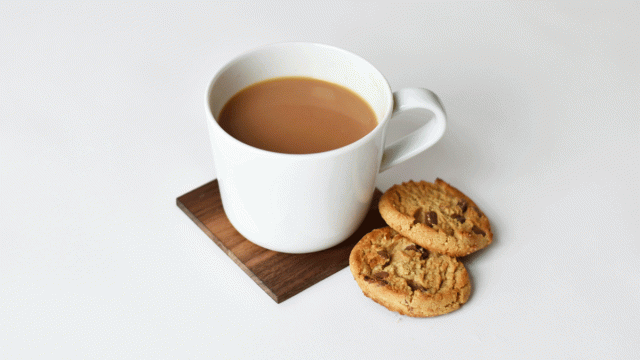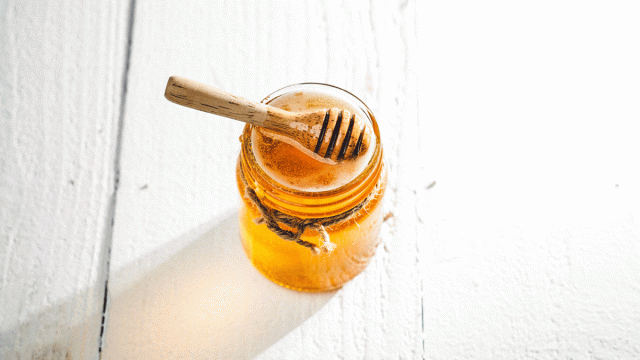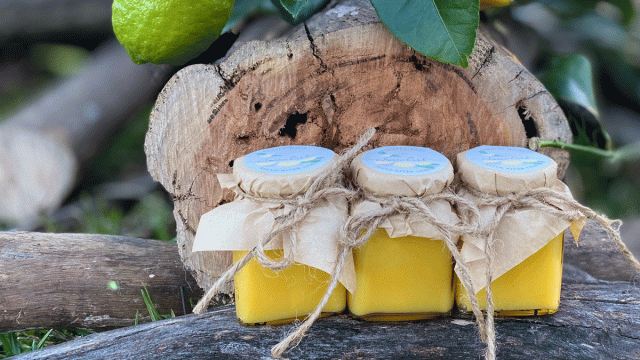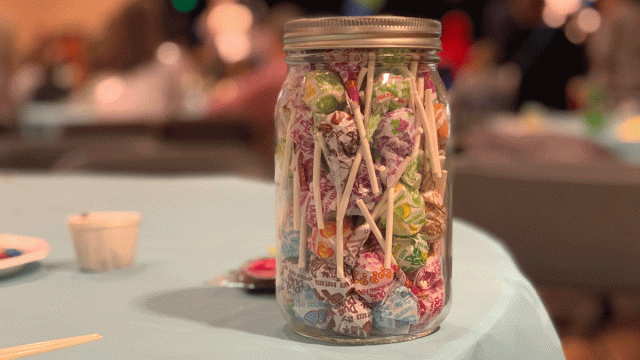If you thought sleep training was strictly for babies, think again. Bedtime and middle-of-the-night troubles can continue into the toddler years (and, basically, your kid’s entire childhood) and it usually begins with two words, spoken in a tiny voice you can’t ignore: “I’m scared.” Good luck, parents, because almost nothing is as hard to ignore as those two little words. Not I’m thirsty. Not, I’m hungry. Not, I want another story (because you’ll hear all those, too). Nope, nighttime fears are the ones that break out hearts.
“What’s tricky for parents of young children is that a child’s fears are usually coupled with natural, normal limit-pushing behaviors—stalling the bedtime routine, saying they’re not tired, wanting another sip of water,” says sleep consultant Kim Rogers, whose company, Sleeping Well Consulting, has been helping babies (and parents) sleep through the night since 2016. “Well-meaning parents are caught between wondering if their child is pushing limits like all young children do or if their child is expressing a legitimate fear that needs attention.”
So how do you know when your kiddo really is scared? And how do you show compassion without staying up all night yourself? There’s no shortage of advice online. A quick Reddit search will turn up a multitude of tricks to comfort scared sleepyheads, from using “Monster Spray” and hanging dream catchers to letting siblings sleep together or playing audiobooks as a distraction.
But what is the “right” way? Is there one? We asked experts to weigh in on what to do when your kid is scared at night. Read on to find out more.
First things first: Are they really scared?
Let’s be honest: Don’t we parents just know most of the time? Rogers says that despite a brew of conflicting emotions, parents can usually tell when children are truly scared and when they’re just doing the don’t-wanna-sleep dance.
“If a child has had a nightmare, you can usually put your hand on their chest and you can feel their hearts beating really fast,” Rogers says. But even if you can’t feel a thumping ticker, parents can usually tell if their kid is truly frightened just by the way they’re talking. If they can give you details about what’s scaring them, for instance, it’s usually legit. Experts say to trust your gut.
Stay calm
The best thing parents can do to help soothe a scared kid is to show them that you’re not scared. Be calm and in control. Offer empathy—without making anything a big deal.
“If we’re giving our child the message that being upset is upsetting to us, and therefore, we must make it stop, we end up accidentally creating more fear and anxiety for our child,” Rogers says.
Nix the “Monster Spray”
Despite the cute social media ads and Etsy pages devoted to “Monster Spray” that’ll exterminate scary creatures from your child’s room (while also making it smell delicious), experts say that these sorts of products aren’t a good idea. And that’s because THERE IS NO SUCH THING AS MONSTERS. In effect, you purchasing a professionally packaged product to rid your little’s room of evil only makes them think there might actually be something sinister hiding in the darkness.
“I would not recommend perpetuating the idea that there are monsters or villains or bad guys, because what if you’re not there to spray the monster spray?” says Dr. Whitney Casares, a pediatrician and spokesperson for the American Academy of Pediatrics.
Instead, she suggests saying something like, “You’re scared that there are monsters. You saw a monster on that TV show. Your mind thinks that they’re real, but I’ve been around a really long time and I know there are no monsters.”
Same goes for checking the closet, under the bed, etc.
This one’s a little trickier because if your kid is truly terrified, taking a quick peek in the closets and crevices may offer the peace of mind she needs to fall back asleep. But if it becomes a nightly routine to do a full security sweep of your child’s room, you might be perpetuating those fears. In addition, this sort of nightly ritual can set the stage for more obsessive thinking, Casares says.
Instead, just say something like, “I don’t need to check for monsters because monsters don’t exist.”
You can address shadows
Shadows may seem like nothing to you, but little kids don’t always understand them. So it might help to explain how shadows form (this book may help) and how the things in their room might look on the walls and floors at night.
Don’t get stuck negotiating
Parents need to be calm when talking to their kids about their nighttime fears, Rogers says. While you don’t want to dismiss their emotions, you don’t want to dwell on them either. “Parents get so caught up in talking and negotiating, even with their two-year-olds,” she explains. “It just ends up being this long drawn-out process, with the parent thinking it’s their job to make the fear go away.”
Instead, tell your kids that they’re safe, that you are there if you need them; and that sleep is a nonnegotiable—“like buckling into the car seat.”
Always offer comfort if your child has a nightmare
According to the AAP, nightmares can begin as early as 6 months and peak between the ages of 3 and 12. Experts say if your kid wakes up in the middle of the night from a nightmare, you should always offer comfort. Here’s how:
- Ask them to tell you what happened in the dream (this can reveal useful information, especially if it’s something they’re watching on TV that you can curb or has to do with something happening during the day)
- Tell them you’re not going to let anything happen to them
- Assure them that dreams aren’t real
- Sit with them for a few minutes and encourage them to go back to sleep
- Once they’re calm (or asleep), try to leave the room
If they come into your room after the nightmare, try to walk them back to their room to comfort them. If you’re too tired to get out of bed (it happens) or want to get some snuggles in, Casares says it’s OK to let your kiddo fall asleep with you after a bad dream. Just make sure your child isn’t crying “nightmare” night after night as a way to sleep in your bed (more on that below).
Related: Everything You Need to Know About Night Terrors in Toddlers
If you’re going to lay with your child… be prepared for a battle when you decide not to
We get it: Sometimes it’s just easier to lay with your kid until they fall asleep. For some parents, this works (up until the child stops wanting it). But experts warn that if parents do this, they should be prepared for pushback when they decide to call it quits.
“The parents who I work with are parents whose lives are falling apart and nobody is sleeping,” Rogers says. “If everyone is in a family bed and everyone is happy and getting plenty of sleep, there’s nothing wrong with that.”
Ditto for bed-sharing (with you or a sibling)
Letting your kid climb into your bed after a nightmare—or have sleepovers with siblings to stave off bad dreams—is probably fine if it only happens a few times. But if your child is coming in every night looking to get under your covers, it’s probably becoming a habit (and not an actual nightmare).
“If your ultimate goal is to have your child sleep on their own, I wouldn’t start the habit of letting them come int0 your bed every time they have a nightmare,” Casares says. “I would have it be that you comfort them in their bed and you help them go back to sleep in their own bed.”
Letting your little sleep with a sibling can also be problematic, since there may come a day when that sibling doesn’t want to co-sleep (especially if it’s an older sibling, who will likely want to sleep solo).
Find a favorite stuffie
If your child doesn’t already have a favorite blanket, doll, or stuffie, it may help to get one. Even the AAP recommends that children have a “security object” to help them self-soothe as they “learn to transition from dependence to independence.”
Similarly, having a “brave stuffie” that sleeps with them can help them feel brave themselves. It can also work to help them self-soothe when they’re alone in their room.
Teach your kid some self-soothing techniques
Rogers recommends breathing exercises: Have your child put her stuffie on her belly and watch as it rises and falls with their breath. You can also play soothing music (no words, because this can keep a child awake) to promote relaxation.
Related: Easy Meditations for Kids
Audiobooks can work as a distraction—but may not put your child to sleep
If you’ve got an older kid who can’t quell racing thoughts after a nightmare, it’s OK to let them put on an audiobook as a distraction. For some children, this might help them fall asleep; for others, it’ll just work to fight the fear (a win) but not bring on the Zs (sigh). Younger kids may enjoy storytime podcasts like Sesame Street’s “Goodnight World,” which includes soothing music to lull littles to snoozeland. There are also sleep meditations—like these—that can help anxious kids learn relaxation tools.
Casares says you want to be careful teaching restless kids to fall asleep with music, since “if they wake up in the middle of the night they’re looking for that music again.”
Know when it’s OK to walk away
If you thought sleep training a newborn was hard on your heart, walking out of the room to let your child handle their own fears is just as difficult—if not more so. But parents need to remember that their kids are OK, and that learning to self-soothe is an important part of building resilience.
“Parents need to remember that they really are there,” Rogers says. “If it was an emergency, they’d be there in a heartbeat.”







